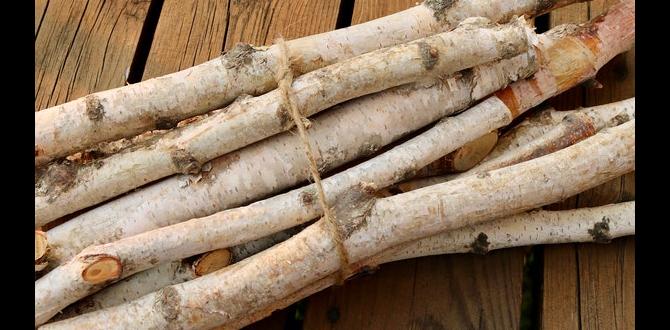Quick Summary: Keep your brad nailer running smoothly and prevent jams by regularly cleaning dust and debris and applying a light coat of specialized lubricant. This simple maintenance ensures reliable performance, extends tool life, and saves you frustration on your woodworking projects.
Hey there, fellow DIYers and woodworkers! Jack Shaffer here from Nailerguy. Let’s talk about something that might seem a little boring but is actually super important: keeping your brad nailer in tip-top shape. We all love the sheer convenience of a brad nailer for those trim projects, picture frames, or even delicate cabinetry. But what happens when it starts acting up? A jammed nailer can turn a fun afternoon project into a frustrating mess. The good news is, most of these issues can be avoided with a little bit of regular love and care. Today, we’re going to demystify the process of cleaning and oiling your brad nailer. It’s far simpler than you might think, and the payoff – a tool that works every time – is absolutely worth it. We’ll walk through it step-by-step, so you’ll be a pro at this maintenance in no time!
Table of Contents
Why Your Brad Nailer Needs a Spa Day (Regularly!)
Think of your brad nailer like any other tool you rely on. If you never change the oil in your car, it won’t run for long, right? Your brad nailer is no different. Even though it’s packed with impressive engineering, it’s still susceptible to the everyday enemies of machinery: dust, debris, and friction.
Over time, tiny particles of wood dust, metal shavings, and even old lubricant can build up inside the nailer. This gunk can clog moving parts, create resistance, and lead to misfires or jams. In the world of brad nailers, a jam isn’t just an inconvenience; it can put your project on hold and, if left unaddressed, can even damage internal components. That’s why a routine cleaning and oiling isn’t just a good idea – it’s essential maintenance for the longevity and performance of your tool.
Regular maintenance also means your nailer will drive nails consistently and cleanly. No more bent nails or nails sticking out slightly. We want those perfect finishes, and a well-maintained tool is the first step. Stick with me, and we’ll get your nailer back to its prime working condition.
When to Show Your Brad Nailer Some Love
So, how often should you be performing this magical maintenance? It’s not a one-size-fits-all answer, but here are some general guidelines to help you decide:
- After Extended Use: If you’ve just finished framing a wall or spent a whole weekend installing trim, it’s a great time for a quick clean and oil.
- Before Storage: Always clean and lightly oil your nailer before putting it away for more than a few days, especially if you’re storing it in a damp environment. This prevents rust and keeps things from seizing up.
- If Performance Declines: Notice it’s getting sluggish, jamming more often, or not driving nails with as much power? That’s a big red flag that it’s time for some attention.
- After Working in Dusty Conditions: If you’ve been cutting a lot of material, especially MDF or particle board, dust can get everywhere internally. Give it a clean right after.
A good rule of thumb is to give your pneumatic brad nailer a quick clean and oil every 50-100 hours of use, or at least once a month if you use it frequently. For cordless electric nailers, check your manual, but a similar schedule often applies. Treating your tool to this bit of TLC will save you headaches down the line.
Gathering Your Essential Maintenance Arsenal
Before you dive in, let’s make sure you have everything you need. You don’t need a whole workshop full of specialty tools for this. Most of what you need, you might already have, or they are inexpensive and readily available.
What You’ll Need:
- Safety Glasses: Absolutely non-negotiable! You don’t want any debris flying into your eyes.
- Gloves: Keeps your hands clean and provides a better grip.
- Compressed Air (for Pneumatic Nailers): A can of compressed air or an air compressor with a blowgun attachment is perfect for blowing out dust.
- Lint-Free Cloths or Rags: For wiping down parts. Avoid anything that sheds a lot of fibers.
- Small Brush: An old toothbrush or a small detailing brush works wonders for dislodging stubborn dust.
- Brad Nailer Lubricant: This is key! Use a specialized tool oil or pneumatic tool lubricant. NEVER use WD-40 for oiling the internal mechanisms of a pneumatic tool, as it can dry out rubber seals. For cordless electric nailers, check your manual for specific lubricant recommendations, but often a light machine oil is sufficient.
- Cotton Swabs: Useful for getting into small crevices and applying lubricant precisely.
- Small Screwdriver (if needed): Some nailers may require a small screwdriver to remove a panel for access. Check your manual.
- Your Brad Nailer’s Manual: Always refer to your specific tool’s manual for any unique instructions or warnings. Safety first!
Having these items ready means you can tackle the maintenance efficiently without having to stop halfway through. It’s all about being prepared!
How to Clean Your Brad Nailer: Step-by-Step Guide
Let’s get down to business! Cleaning your brad nailer is straightforward. We’ll cover both pneumatic and cordless electric types, as the principles are similar but some specifics might differ. Always ensure your tool is disconnected from its power source (air hose for pneumatic, battery for cordless) before you begin.
Step 1: Disconnect Power!
This is the absolute first and most crucial step for safety. For pneumatic nailers, disconnect the air hose. For cordless models, remove the battery pack. Double-check that the tool cannot fire.
Step 2: Address the Feeder Mechanism and Magazine
This is where most of the dust and debris tends to collect.
- Empty the Magazine: Remove any remaining nails from the magazine.
- Wipe Down the Exterior: Use a dry, lint-free cloth to wipe away any surface dust and debris from the entire body of the nailer.
- Clear the Feed Path: If your nailer’s magazine can be opened or slid apart, carefully do so. Use your small brush and compressed air (for pneumatic) to gently blow out any dust or nail fragments from the feed path where the nails sit. For cordless models, a dry cloth and brush are usually sufficient. Be careful not to force anything.
- Check the Nose: The area around the nose – where the nail is fired from – can accumulate sawdust. Gently wipe it clean with a cloth. If there’s any visible debris stuck around the driver blade (the part that pushes the nail), try to carefully dislodge it with a brush.
Step 3: Clean the Internal Mechanism (Where Accessible)
This step is more about blowing out loose dust rather than disassembling major parts, unless your manual specifies.
- Pneumatic Nailers: With the magazine clear and ready, and using your compressed air, gently blow air into any accessible openings where dust might have entered. Some nailers have small air vents; be careful not to blow debris deeper into the tool. A quick puff here and there is usually enough.
- Cordless Electric Nailers: The process is similar. Use a dry cloth and a small brush to clean around any access points. Some models might have small removable covers that allow you to sweep out dust. Again, consult your manual.
The goal here is to remove the loose stuff, not to perform a deep internal cleaning that requires disassembly. For the vast majority of users and tools, this surface-level cleaning, combined with proper oiling, will keep things running smoothly.
Step 4: Inspect for Damage
While cleaning, take a moment to look for any obvious signs of damage. Are there any cracks in the housing? Is the driver blade bent or damaged? If you spot anything concerning, it might be time to contact the manufacturer or consider professional repair. Minor issues are usually fixable, but it’s good to be aware.
Oiling Your Brad Nailer: The Key to Smooth Operation
Oil is the lifeblood of any pneumatic tool, and it’s crucial for keeping your brad nailer free from friction and wear. For cordless electric brad nailers, the need for lubrication might be less frequent or different, so always refer to your manual first. But overwhelmingly, for pneumatic models, oiling is a must.
Pneumatic Brad Nailer Oiling:
Most pneumatic brad nailers are designed to accept oil either through an integrated oil port or via an in-line lubricator attached to your air hose.
-
Using an Integrated Oil Port: Many tools have a small port, often capped, specifically for adding lubricant.
- Locate the oil port (check your manual!).
- Remove the cap.
- Apply 1-3 drops of specialized pneumatic tool oil. Do not over-oil! Too much oil can attract dirt and create a mess.
- Replace the cap securely.
- Using an In-Line Lubricator: If you have an in-line lubricator attached to your air compressor hose, fill it with the proper tool oil. These devices meter oil into the air stream, lubricating the tool as you use it. They are an excellent way to provide continuous lubrication. Follow the manufacturer’s instructions for your specific lubricator for fill levels and adjustment.
- After Oil Application: Once oiled (either via port or inline lubricator), connect the air hose and fire the nailer a few times into a scrap piece of wood. This helps distribute the oil internally. You might see a little puff of oily mist on the first few shots – this is normal.
Cordless Electric Brad Nailer Oiling:
Cordless electric nailers have different internal mechanisms, often sealed, and may not require regular oiling in the same way as pneumatic tools.
- Check Your Manual: This is your best friend. Your manual will tell you if and where to apply lubricant, and what type.
- Lubrication Points: If lubrication is required, it might be for specific moving parts or external contact points that can be accessed without full disassembly. Typically, it’s just a drop or two on specific pivot points or sliding mechanisms.
- Avoid Over-Oiling: Just like with pneumatic tools, less is more. Too much oil can gum up the works or attract debris.
Crucial Note on Lubricants: For pneumatic tools, always use a dedicated pneumatic tool oil. Products like WD-40 are great for cleaning and water displacement but are NOT suitable for long-term lubrication of the internal workings of pneumatic tools. They can degrade rubber seals and o-rings. A light machine oil or specialized synthetic tool oil is what you want. For cordless tools, stick to what your manufacturer recommends, which is often a light machine oil or a specific grease for certain components.
What NOT to Do: Common Maintenance Mistakes
Just as important as knowing what to do is knowing what not to do. Avoiding these common pitfalls will save your brad nailer from premature failure and yourself from a lot of frustration.
| Mistake | Why It’s Bad | The Right Way |
|---|---|---|
| Using WD-40 as a Lubricant |
WD-40 is a solvent and water displacer, not a long-term lubricant. It can dry out rubber seals and o-rings inside pneumatic nailers, leading to leaks and component failure. It also leaves a residue that can attract dust. |
Always use dedicated pneumatic tool oil for pneumatic nailers. For cordless tools, follow the manufacturer’s specific lubrication recommendations. |
| Over-Oiling |
Too much oil can attract excess dust and debris, creating a gummy mess inside the tool that can actually hinder performance and lead to more problems than it solves. It can also lead to oily residue on your workpieces. |
Use only a few drops (1-3) at a time, as recommended. If using an in-line lubricator for pneumatic tools, set it to the appropriate metering for your tool and usage. |
| Skipping the Power Disconnect |
Working on a powered tool without disconnecting the power source (air hose or battery) is an extreme safety hazard. You could accidentally fire the tool, causing injury. |
Always disconnect the air hose or remove the battery before performing any cleaning or maintenance. Ensure the trigger cannot be pulled to fire. |
| Forcing Parts or Obstructions |
Trying to force jammed nails or debris out with excessive force can bend or break internal components, such as the driver blade or cylinder. |
Use gentle methods like compressed air, brushes, and appropriate tools to clear obstructions. If something is truly stuck, consult your manual or a professional. |
| Not Cleaning Regularly |
Allowing dust and debris to build up is the fastest way to wear out internal parts, cause jams, and reduce the efficiency and lifespan of your nailer. |
Establish a routine for cleaning and oiling based on your usage frequency. A quick clean after heavy use and a more thorough check monthly is a good starting point. |
| Using the Wrong Type of Lubricant for Cordless Tools |
Some cordless tools have specific grease points or require specialized oils for their gears or motors. Using the wrong type can damage components or lead to poor performance. |
Always, always, always refer to your cordless nailer’s owner’s manual for lubricant type and application points. If no lubrication is specified, do not add any. |
Staying aware of these common errors will help ensure you’re treating your brad nailer with the care it deserves.
Troubleshooting Common Brad Nailer Issues
Even with the best maintenance, you might encounter a hiccup now and then. Here’s how to spot and fix some common brad nailer problems.
1. Nailer Not Firing
Possible Causes:
- No air pressure (pneumatic) or dead battery (cordless).
- Trigger lock is engaged.
- Driver blade is stuck.
- Internal mechanism issue.
Solutions:
- Check air hose connection and compressor pressure (pneumatic). Ensure battery is charged and properly seated (cordless).
- Check for a trigger lock mechanism and disengage it.
- Disconnect power, then try to gently tap the nose of the nailer or carefully attempt to free the driver blade with a non-marring tool.
- If the above don’t work, it likely needs deeper inspection or professional service.
2. Nails Jamming
Possible Causes:
- Incorrect nail size or collation angle.
- Dust and debris in the feed mechanism.
- Driver blade is not fully retracting.
- Worn internal parts.
Solutions:
- Ensure you are using the correct type and size of brads recommended by the manufacturer. Check the collation angle matches your tool’s magazine.
- Perform the cleaning steps outlined earlier. This is the most common fix.
- Ensure the driver blade retracts freely after firing. Clean and lubricate if necessary.
- If jams persist after cleaning, internal wear might be the issue.
3. Nails Not Fully Driving / Weak Shots
Possible Causes:
- Low air pressure (pneumatic).
- Leaky seals or O-rings.
- Lack of lubrication.
- Battery not fully charged or faulty (cordless).
Solutions:
- Increase air pressure to the recommended setting for your nailer.
- Listen for air leaks around seals. Address any leaks by replacing worn parts.
- Ensure your nailer is properly lubricated.
- Charge or replace the battery.
4. Oil Leaking from the Tool
Possible Causes:
- Over-oiling.
- Worn or damaged internal seals/O-rings.
- Cracked housing or fittings.
Solutions:
- Reduce the amount of oil used.
- Inspect for worn


